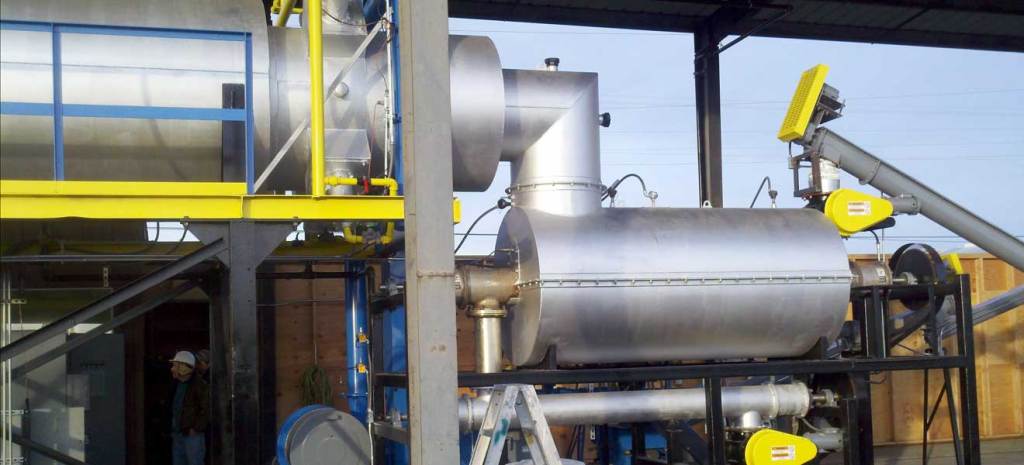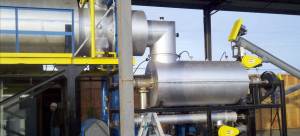
Proprietary Pyrolysis Systems & Processes – Technology Overview
The Pyrolysis systems are turnkey solutions for business and governments to bring finality to problem wastes, while reducing greenhouse gas emissions and producing renewable energy. The Pyrolysis systems:
- Process tires, plastics, wood, MSW, industrial, medical, agricultural and oil field wastes.
- Reductions of up to 92% of initial feed volumes can be achieved.
- Reactivates carbon.
- Meet all regulatory and performance standards set by the USEPA under the “Clean Air Act”.
- Offer version 5.0 in 1000 and 4000 pound per hour systems.
- Operate as stationary units or as transportable units mounted to a truck or barge.
Tires to Energy
One of the most exciting uses of our pyrolysis systems is the ability to convert tires to energy. Tires provide a near limitless fuel supply for our systems. A passenger car tire contains the energy equivalent of seven gallons of oil. Our systems can process this fuel very efficiently while at the same time sequestering harmful greenhouse gas emissions. Tires are shredded and continuously fed into the system to fire a steam turbine generator to produce electricity.

Fast Facts on the Proprietary Pyrolysis Systems & Processes
- The systems continuously convert organic materials (slurry and solid) into syngas, steam, and carbon char
- Reduce waste by up to 90% in weight and volume
- A 2 ton/hr unit can produce between 2.5Mw to 5Mw of electricity per hour. That’s enough electricity to power 5000 – 10,000 domestic households
- Each unit is fully equipped with a high tech PLC Control center, giving full control of each process to the machine
- The system creates at least 5 BTUs* from every BTU of input
- Our systems have undergone 20 years of engineering, testing, and technical upgrades
What can you process?
- Plastics
- Wood
- Soil
- Municipal waste
- Tires
- Industrial waste
- Medical Waste
- Oil field sludge
- Pesticides
- PCB Materials
These wastes can be in the form of liquids, solids, slurries, or sludge. Solid and liquid wastes can be processed simultaneously.
What are the by-products?
The systems gasify waste by indirectly heating it between 537º C and 1010º C. Hot gasses are drawn into the thermal oxidizer, where they are combined with oxygen and ignited. This heat can then be directed to a boiler to produce steam for green power. As a result, the emissions of the systems are mostly CO2, and comply with standards set by the EPA.
The solid waste of the system is a sterile, non-leachable, sequestered form of carbon char, which has selling potential. This char has a number of industrial uses.
Value added commodities of our systems include: sequestered carbon char for use in:
- Soil amendments

- Rubber and plastic manufacturing
- Inks and coatings
- Activated carbon and filter media
- Solid fuel (briquettes)
- Carbon credits and Emission trading credits
- Energy pellets
- Biomass
- Process steam
- Steam to electricity generation to power in-house processes
- Production of green electricity for sale to the grid
Cost cutting and significant increase of your bottom line due to:
- Reduced transportation of waste products
- Lower energy prices
- Packaging and disposal savings
*A BTU, short for British Thermal Unit, is a basic measure of thermal (heat) energy. One BTU is the amount of energy needed to heat one pound of water one degree Fahrenheit.
